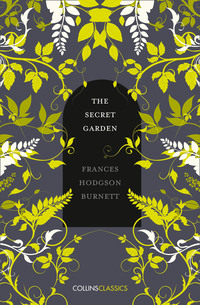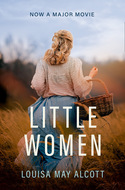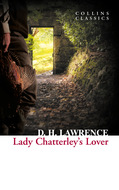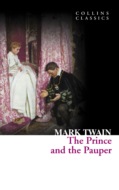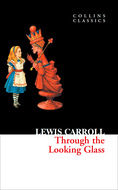Buch lesen: "The Secret Garden"
Collins Classics
History of Collins
In 1819, Millworker William Collins from Glasgow, Scotland, set up a company for printing and publishing pamphlets, sermons, hymn books and prayer books. That company was Collins and was to mark the birth of HarperCollins Publishers as we know it today. The long tradition of Collins dictionary publishing can be traced back to the first dictionary William published in 1824, Greek and English Lexicon. Indeed, from 1840 onwards, he began to produce illustrated dictionaries and even obtained a licence to print and publish the Bible.
Soon after, William published the first Collins novel, Ready Reckoner, however it was the time of the Long Depression, where harvests were poor, prices were high, potato crops had failed and violence was erupting in Europe. As a result, many factories across the country were forced to close down and William chose to retire in 1846, partly due to the hardships he was facing.
Aged 30, William’s son, William II took over the business. A keen humanitarian with a warm heart and a generous spirit, William II was truly ‘Victorian’ in his outlook. He introduced new, up-to-date steam presses and published affordable editions of Shakespeare’s works and Pilgrim’s Progress, making them available to the masses for the first time. A new demand for educational books meant that success came with the publication of travel books, scientific books, encyclopaedias and dictionaries. This demand to be educated led to the later publication of atlases and Collins also held the monopoly on scripture writing at the time.
In the 1860s Collins began to expand and diversify and the idea of ‘books for the millions’ was developed. Affordable editions of classical literature were published and in 1903 Collins introduced 10 titles in their Collins Handy Illustrated Pocket Novels. These proved so popular that a few years later this had increased to an output of 50 volumes, selling nearly half a million in their year of publication. In the same year, The Everyman’s Library was also instituted, with the idea of publishing an affordable library of the most important classical works, biographies, religious and philosophical treatments, plays, poems, travel and adventure. This series eclipsed all competition at the time and the introduction of paperback books in the 1950s helped to open that market and marked a high point in the industry.
HarperCollins is and has always been a champion of the classics and the current Collins Classics series follows in this tradition – publishing classical literature that is affordable and available to all. Beautifully packaged, highly collectible and intended to be reread and enjoyed at every opportunity.
Life & Times
About the Author
Frances Hodgson Burnett was born in 1849 into an impoverished family in the slums of Manchester, England during the Industrial Revolution. Her father died when she was five years old, leaving the family in dire straits. Her mother was struggling to raise Frances and her four siblings when a considerate uncle urged them to emigrate to the USA. When her mother died at the age of 18, Frances was left to care for her siblings.
Frances turned to writing with the very specific idea of making money to feed the family. Within a year she had managed to sell her first story to a monthly magazine and begun to establish herself as a professional author. She published her first novel in 1877 and by 1886 she had written a number of novels. Her best seller, Little Lord Fauntleroy sold so well that it quickly made her a lady of independent means.
In the late 1890s Hodgson Burnett returned to England and took up residence in Great Maytham Hall, in the county of Kent. On exploration of the grounds of the property she discovered a walled garden untended for a number of years. She took it upon herself to restore the garden to floral splendour and then used the space as a place to sit and write. It was here that she conjured the idea for her children’s novel The Secret Garden, which was eventually published in 1911.
The Secret Garden
In The Secret Garden, Hodgson Burnett imagined her home of Maytham Hall to be populated by other people. She herself claimed that a robin had shown her where to find the key for the real walled garden, so she used this as a devise to allow her protagonist to discover her way into the secret garden in the story.
The heroine of Hodgson Burnett’s narrative is an orphaned girl named Mary Lennox, who finds herself living at the home of her uncle. The girl is lonely and inquisitive, leading her to find the secret garden. She soon realises that there is another child living in the manor house; her cousin Colin Craven.
Colin is a sickly child, confined to his bedroom, but slowly a friendship forms between them and Mary begins to open up Colin’s world by taking him outside to visit the garden she has discovered. It turns out that Colin’s father is overly protective and has kept him shut away for the good of his health. He is initially displeased to discover that his son has been venturing outside, but he is soon overcome with joy at seeing his son’s subsequent recovery to good health and grateful to Mary for her part.
The theme of the book is essentially about the restorative properties of nature. On her arrival at Maytham Hall Mary was an ill-tempered and neglected child, but the garden soothes her and helps her to piece her life back together again. It has a similar calming affect on Colin, who suffers from psychosomatic illness partly brought about by the obsessive nature of his father. His father remains in mourning for his late wife, but he too eventually finds solace and happiness through the garden.
The Edwardian Era
The Secret Garden was written in the Edwardian era, just before the outbreak of World War I. Queen Victoria had died at the turn of the 20th century and the British Empire covered an astonishing quarter of the globe. Hodgson Burnett was a working class Mancunian, but she also had a worldly view because of her time spent in the USA. Consequently, she had cultivated a romanticized and slightly bitter-sweet view of English aristocracy.
Her heroine Mary had been cruelly neglected by her well-to-do parents living in colonial India and then orphaned by their deaths from cholera. Her uncle was also rather remote from his son Colin, demonstrating Hodgson Burnett’s view of the upper class English as being stiff and lacking in emotional connection. She uses the secret garden as a form of therapy for the children, indicating that she recognises the value in keeping one’s feet on the ground, literally as well as metaphorically. The children are also helped in their recuperation by the working class staff at the manor.
This idea of the importance of socially connecting is paralleled in Howards End, written by E. M. Forster and published the year before The Secret Garden, in 1910. Forster’s book addresses relationships between people of different classes and cultures, as the central characters are Germans living in pre-war England. Following World War I, the world was left a very different place. The British Empire had had its foundations shaken and was about to be razed to the ground. Similarly the class structure in England was eroding with the redistribution of wealth and opportunity.
Hodgson Burnett had already moved back to America by 1909 having secured US citizenship. She lived in New York State for the remainder of her life, where she continued to write. In The Secret Garden she had experimented with ideas about curing ailments through mind over matter, and this became something of central interest in her autumn years. This was expressed in her practicing theosophy, which was essentially a blend of religion and philosophy. It seems that her mind required a belief system, but she was reluctant to think of herself as religious and invest her entirety in religion alone.
Hodgson Burnett was also a playwright, but she is best known as a children’s writer and fantasy novelist. The Secret Garden has become a staple of English literature because it is the kind of story that can be enjoyed by both child and adult together. Moreover, many children grow into adults with a fondness for the story and then introduce their own offspring to its charm. For that reason, the book has remained popular for a century.
Visit www.AuthorTracker.com for exclusive information on your favorite HarperCollins author.
Table of Contents
Cover Page
Title Page
History of Collins
Life & Times
CHAPTER 1 There is No One Left
CHAPTER 2 Mistress Mary Quite Contrary
CHAPTER 3 Across the Moor
CHAPTER 4 Martha
CHAPTER 5 The Cry in the Corridor
CHAPTER 6 ‘There was someone crying – there was!’
CHAPTER 7 The Key of the Garden
CHAPTER 8 The Robin Who Showed the Way
CHAPTER 9 The Strangest House Anyone Ever Lived In
CHAPTER 10 Dickon
CHAPTER 11 The Nest of the Missel Thrush
CHAPTER 12 ‘Might I have a bit of earth?’
CHAPTER 13 ‘I am Colin’
CHAPTER 14 A Young Rajah
CHAPTER 15 Nest Building
CHAPTER 16 ‘I won’t!’ said Mary
CHAPTER 17 A Tantrum
CHAPTER 18 ‘Tha’ munnot waste no time’
CHAPTER 19 ‘It has come!’
CHAPTER 20 ‘I shall live for ever – and ever – and ever!’
CHAPTER 21 Ben Weatherstaff
CHAPTER 22 When the Sun Went Down
CHAPTER 23 Magic
CHAPTER 24 ‘Let them laugh’
CHAPTER 25 The Curtain
CHAPTER 26 ‘It’s Mother!’
CHAPTER 27 In the Garden
CLASSIC LITERATURE: WORDS AND PHRASES
Copyright
About the Publisher
CHAPTER 1 There is No One Left
When Mary Lennox was sent to Misselthwaite Manor to live with her uncle, everybody said she was the most disagreeable-looking child ever seen. It was true, too. She had a little thin face and a little thin body, thin light hair and a sour expression. Her hair was yellow, and her face was yellow because she had been born in India and had always been ill in one way or another. Her father had held a position under the English Government and had always been busy and ill himself, and her mother had been a great beauty who cared only to go to parties and amuse herself with gay people. She had not wanted a little girl at all, and when Mary was born she handed her over to the care of an Ayah, who was made to understand that if she wished to please the Memsahib she must keep the child out of sight as much as possible. So when she was a sickly, fretful, ugly little baby she was kept out of the way, and when she became a sickly, fretful, toddling thing she was kept out of the way also. She never remembered seeing familiarly anything but the dark faces of her Ayah and the other native servants, and as they always obeyed her and gave her her own way in everything, because the Memsahib would be angry if she was disturbed by her crying, by the time she was six years old she was as tyrannical and selfish a little pig as ever lived. The young English governess who came to teach her to read and write disliked her so much that she gave up her place in three months, and when other governesses came to try to fill it they always went away in a shorter time than the first one. So if Mary had not chosen really to want to know how to read books, she would never have learned her letters at all.
One frightfully hot morning, when she was about nine years old, she awakened feeling very cross, and she became crosser still when she saw that the servant who stood by her bedside was not her Ayah.
‘Why did you come?’ she said to the strange woman. ‘I will not let you stay. Send my Ayah to me.’
The woman looked frightened, but she only stammered that the Ayah could not come, and when Mary threw herself into a passion and beat and kicked her, she looked only more frightened and repeated that it was not possible for the Ayah to come to Missie Sahib.
There was something mysterious in the air that morning. Nothing was done in its regular order and several of the native servants seemed missing, while those whom Mary saw slunk or hurried about with ashy and scared faces. But no one would tell her anything, and her Ayah did not come. She was actually left alone as the morning went on, and at last wandered out into the garden and began to play by herself under a tree near the veranda. She pretended that she was making a flower-bed, and she stuck big scarlet hibiscus blossoms into little heaps of earth, all the time growing more and more angry and muttering to herself the things she would say and the names she would call Saidie when she returned.
‘Pig! Pig! Daughter of Pigs!’ she said, because to call a native a pig is the worst insult of all.
She was grinding her teeth and saying this over and over again when she heard her mother come out on the veranda with someone. She was with a fair young man, and they stood talking together in low strange voices. Mary knew the fair young man who looked like a boy. She had heard that he was a very young officer who had just come from England. The child stared at him, but she stared most at her mother. She always did this when she had a chance to see her, because the Memsahib – Mary used to call her that oftener than anything else – was such a tall, slim, pretty person and wore such lovely clothes. Her hair was like curly silk and she had a delicate little nose which seemed to be disdaining things, and she had large laughing eyes. All her clothes were thin and floating, and Mary said they were ‘full of lace’. They looked fuller of lace than ever this morning, but her eyes were not laughing at all. They were large and scared and lifted imploringly to the fair boy officer’s face.
‘Is it so very bad? Oh, is it?’ Mary heard her say.
‘Awfully,’ the young man answered in a trembling voice. ‘Awfully, Mrs Lennox. You ought to have gone to the hills two weeks ago.’
The Memsahib wrung her hands.
‘Oh, I know I ought!’ she cried. ‘I only stayed to go to that silly dinner-party. What a fool I was!’
At that very moment such a loud sound of wailing broke out from the servants’ quarters that she clutched the young man’s arm, and Mary stood shivering from head to foot. The wailing grew wilder and wilder.
‘What is it? What is it?’ Mrs Lennox gasped.
‘Someone has died,’ answered the boy officer. ‘You did not say it had broken out among your servants.’
‘I did not know!’ the Memsahib cried. ‘Come with me! Come with me!’ and she turned and ran into the house.
After that, appalling things happened, and the mysteriousness of the morning was explained to Mary. The cholera had broken out in its most fatal form and people were dying like flies. The Ayah had been taken ill in the night, and it was because she had just died that the servants had wailed in the huts. Before the next day three other servants were dead and others had run away in terror. There was panic on every side, and dying people in all the bungalows.
During the confusion and bewilderment of the second day Mary hid herself in the nursery and was forgotten by everyone. Nobody thought of her, nobody wanted her, and strange things happened of which she knew nothing. Mary alternately cried and slept through the hours. She only knew that people were ill and that she heard mysterious and frightening sounds. Once she crept into the dining-room and found it empty, though a partly finished meal was on the table and chairs and plates looked as if they had been hastily pushed back when the diners rose suddenly for some reason. The child ate some fruit and biscuits, and being thirsty she drank a glass of wine which stood nearly filled. It was sweet, and she did not know how strong it was. Very soon it made her intensely drowsy, and she went back to her nursery and shut herself in again, frightened by cries she heard in the huts and by the hurrying sound of feet. The wine made her so sleepy that she could scarcely keep her eyes open, and she lay down on her bed and knew nothing more for a long time.
Many things happened during the hours in which she slept so heavily, but she was not disturbed by the wails and the sound of things being carried in and out of the bungalow.
When she awakened she lay and stared at the wall. The house was perfectly still. She had never known it to be so silent before. She heard neither voices nor footsteps, and wondered if everybody had got well of the cholera and all the trouble was over. She wondered also who would take care of her now her Ayah was dead. There would be a new Ayah, and perhaps she would know some new stories. Mary had been rather tired of the old ones. She did not cry because her nurse had died. She was not an affectionate child and had never cared much for anyone. The noise and hurrying about and wailing over the cholera had frightened her, and she had been angry because no one seemed to remember that she was alive. Everyone was too panic-stricken to think of a little girl no one was fond of. When people had the cholera it seemed that they remembered nothing but themselves. But if everyone had got well again, surely someone would remember and come to look for her.
But no one came, and as she lay waiting the house seemed to grow more and more silent. She heard something rustling on the matting, and when she looked down she saw a little snake gliding along and watching her with eyes like jewels. She was not frightened, because he was a harmless little thing who would not hurt her, and he seemed in a hurry to get out of the room. He slipped under the door as she watched him.
‘How queer and quiet it is,’ she said. ‘It sounds as if there was no one in the bungalow but me and the snake.’
Almost the next minute she heard footsteps in the compound, and then on the veranda. They were men’s footsteps, and the men entered the bungalow and talked in low voices. No one went to meet or speak to them, and they seemed to open doors and look into rooms.
‘What desolation!’ she heard one voice say. ‘That pretty, pretty woman! I suppose the child, too. I heard there was a child, though no one ever saw her.’
Mary was standing in the middle of the nursery when they opened the door a few minutes later. She looked an ugly, cross little thing and was frowning because she was beginning to be hungry and feel disgracefully neglected. The first man who came in was a large officer she had once seen talking to her father. He looked tired and troubled, but when he saw her he was so startled that he almost jumped back.
‘Barney!’ he cried out. ‘There is a child here! A child alone! In a place like this! Mercy on us, who is she?’
‘I am Mary Lennox,’ the little girl said, drawing herself up stiffly. She thought the man was very rude to call her father’s bungalow ‘A place like this!’ ‘I fell asleep when everyone had the cholera and I have only just wakened up. Why does nobody come?’
‘It is the child no one ever saw!’ exclaimed the man, turning to his companions. ‘She has actually been forgotten!’
‘Why was I forgotten?’ Mary said, stamping her foot. ‘Why does nobody come?’
The young man whose name was Barney looked at her very sadly. Mary even thought she saw him wink his eyes as if to wink tears away.
‘Poor little kid!’ he said. ‘There is nobody left to come.’
It was in that strange and sudden way that Mary found out that she had neither father nor mother left; that they had died and been carried away in the night, and that the few native servants who had not died also had left the house as quickly as they could get out of it, none of them even remembering that there was a Missie Sahib. That was why the place was so quiet. It was true that there was no one in the bungalow but herself and the little rustling snake.
